Physical Address
304 North Cardinal St.
Dorchester Center, MA 02124
The major salivary glands: parotid, submandibular, and sublingual glands, are paired and symmetric. In the oral cavity 700–900 minor salivary glands are found, the majority of which are located at the junction of the hard and soft palates. In this chapter, anatomic relations of the main salivary glands are shown in a layered fashion.
The face ( Fig. 1.1 ) is divided into two main compartments: the superficial compartments dedicated to mimicry and innervated by the facial nerve; and the deep visceral compartment innervated by the other cranial nerves. The superficial compartments are constituted by five layers: (1) skin; (2) subcutaneous tissue including fat and tela-retinaculum cutis ( Fig. 1.2 ); (3) submuscular aponeurotic system (SMAS) ( Fig. 1.3 ); (4) deep facial space; (5) deep facial fascia. The parotid gland is in the visceral compartment ( Fig. 1.4 ), under the deep facial fascia, i.e., deep to the 5th superficial compartment layer.
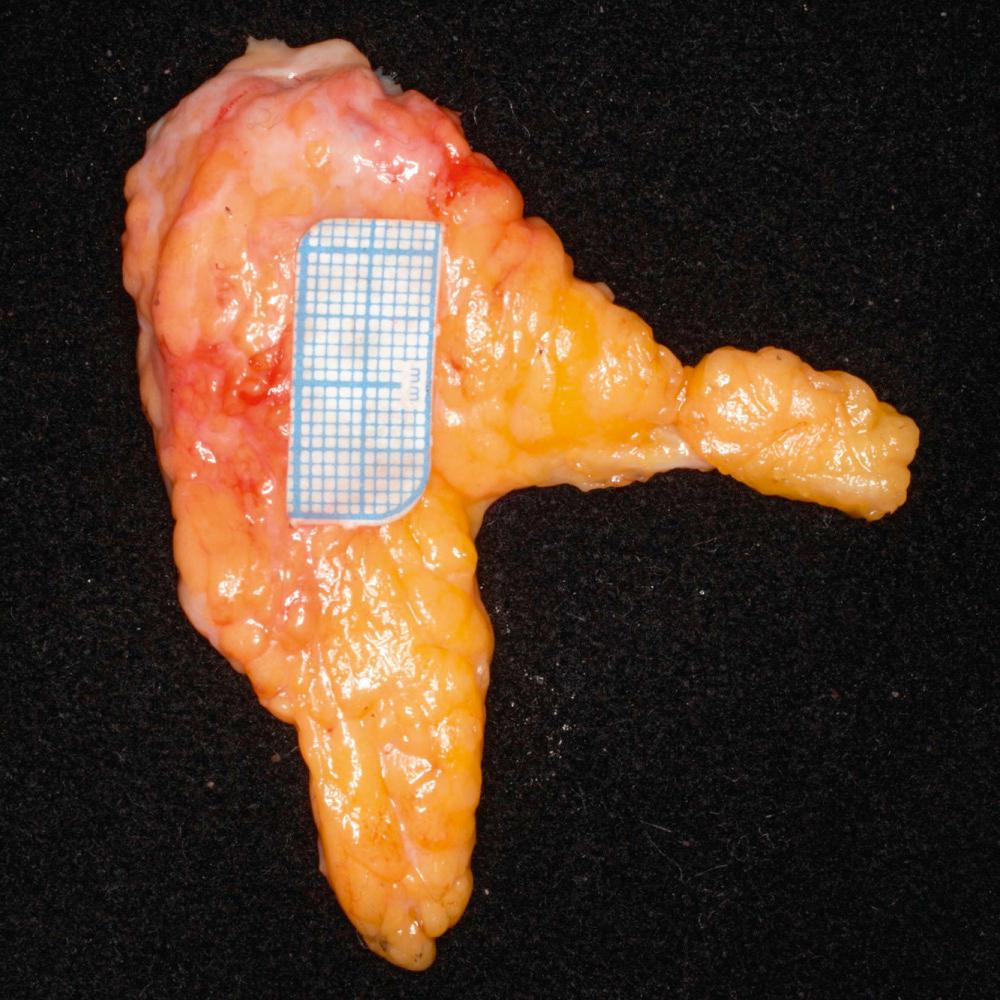
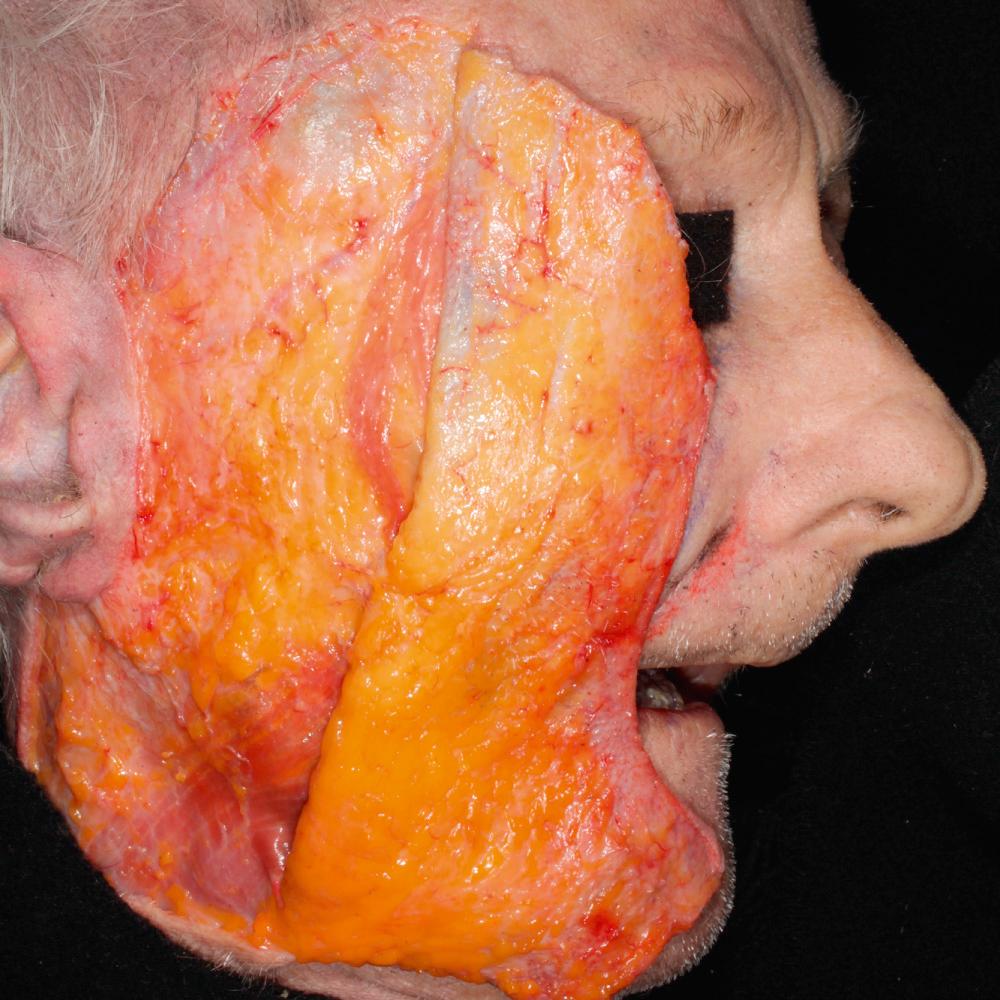
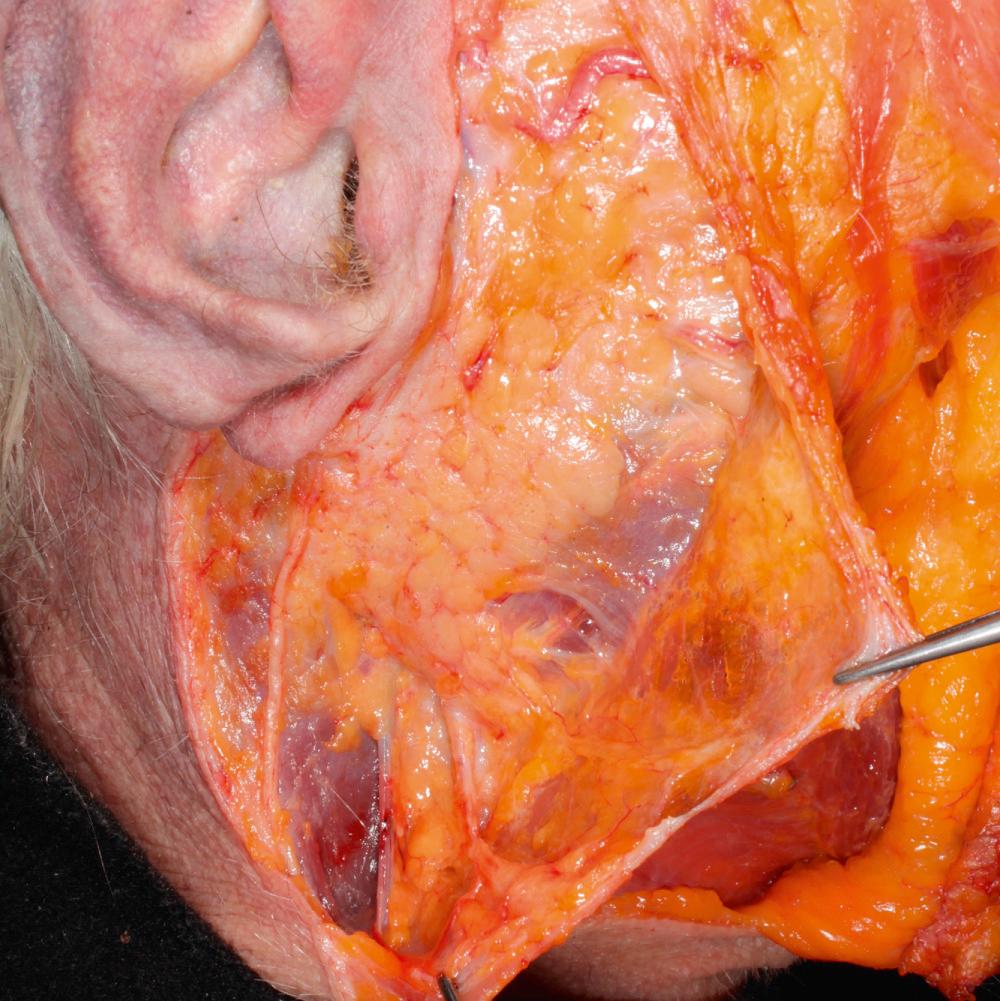
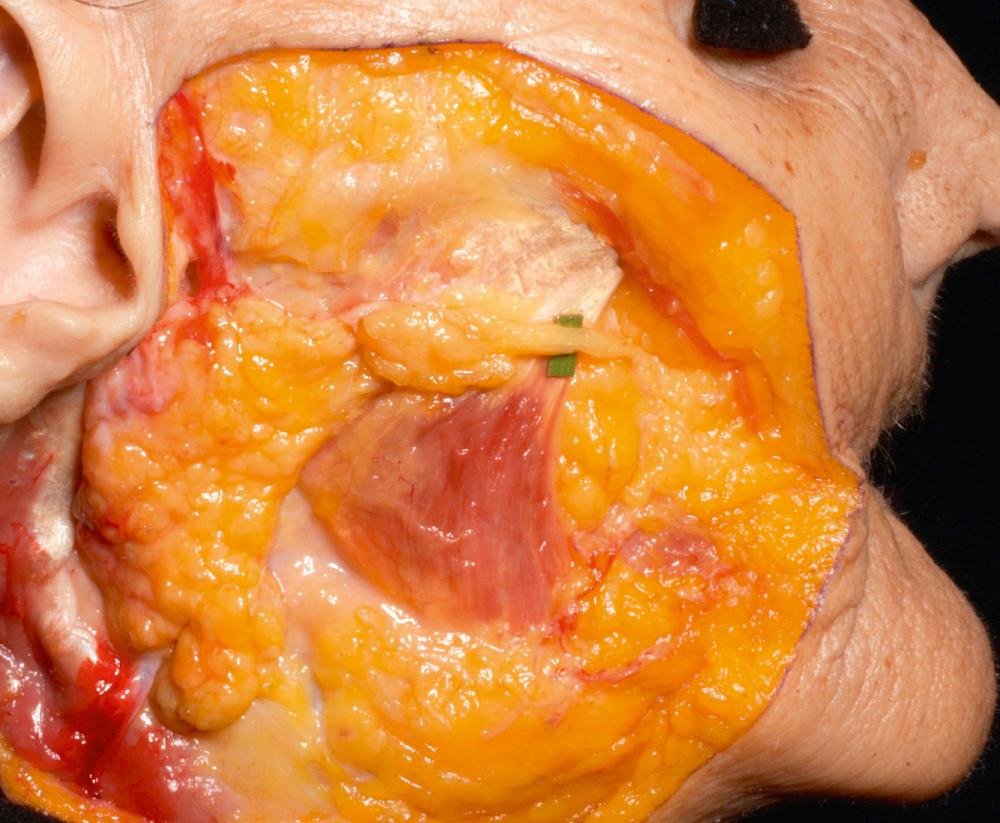
It lies within a deep hollow, known as the parotid region. The parotid region is bounded by the: superiorly–zygomatic arch; anteriorly–masseter muscle and mandible bone ( Fig. 1.5 ); posteriorly–external ear tragal cartilage and sternocleidomastoid muscle; inferiorly, the inferior parotid pole is between the ramus of the mandible and sternocleidomastoid muscle overlying the digastric muscle ( Fig. 1.5 ). The deep aspect rests in the prestyloid compartment of the parapharyngeal space ( Fig. 1.6 ).
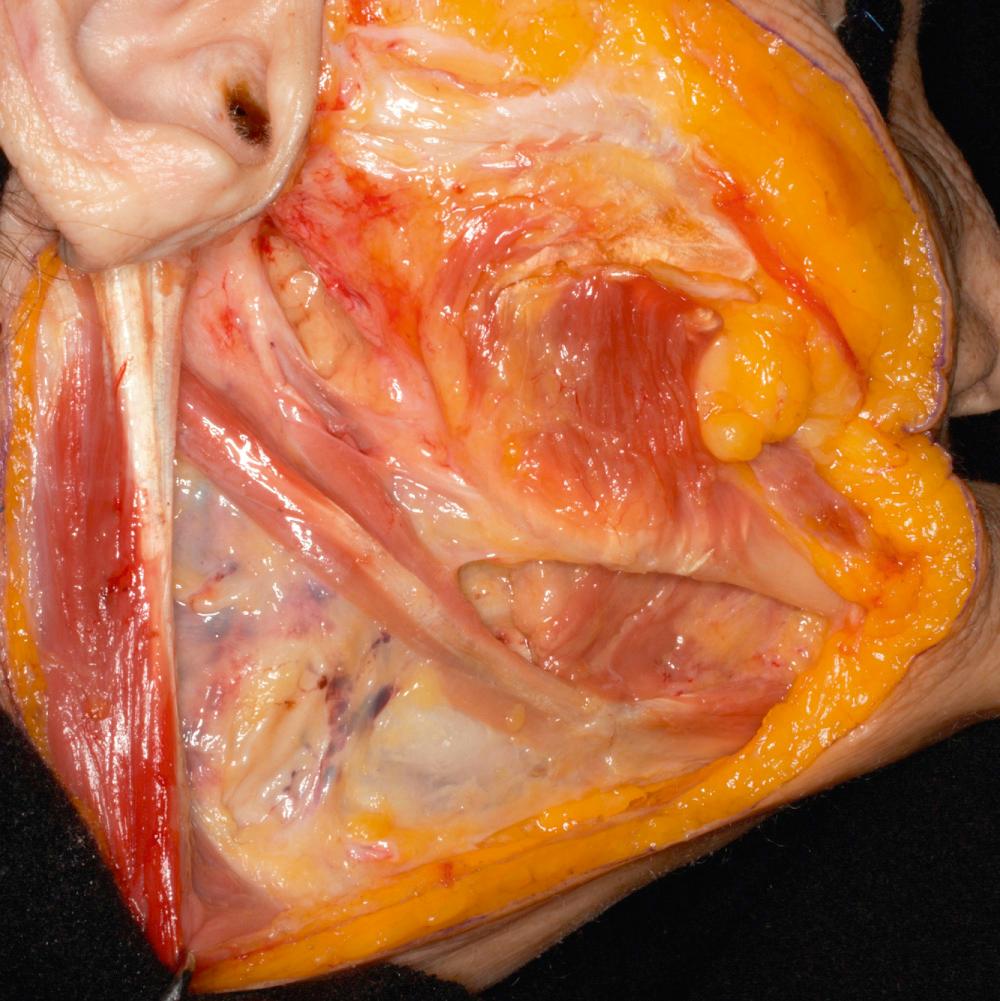
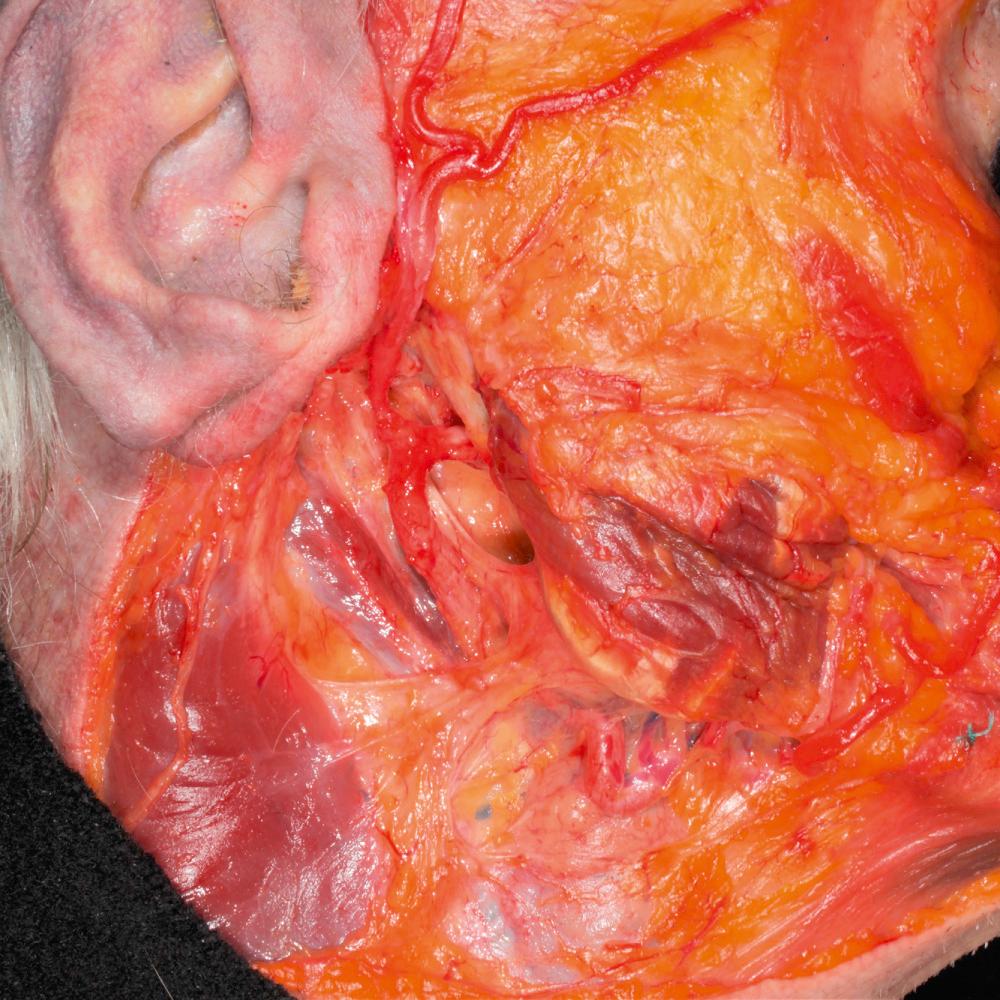
The parotid gland is a bilateral prismatic structure that looks like an inverted three-sided pyramid, which displays a lobular and irregular morphology ( Fig. 1.1 ). It presents at four surfaces: superior, superficial, anteromedial, and posteromedial; separated by three borders: anterior, posterior, and medial.
Anatomically, the parotid can be divided into deep and superficial lobes, which are separated by the facial nerve. Approximately 80% of the parenchyma is located as superficial lobe.
Blood is supplied by the posterior auricular and superficial temporal arteries. They are both branches of the external carotid artery, which arise within the parotid gland ( Figs. 1.7 , 1.8 ).
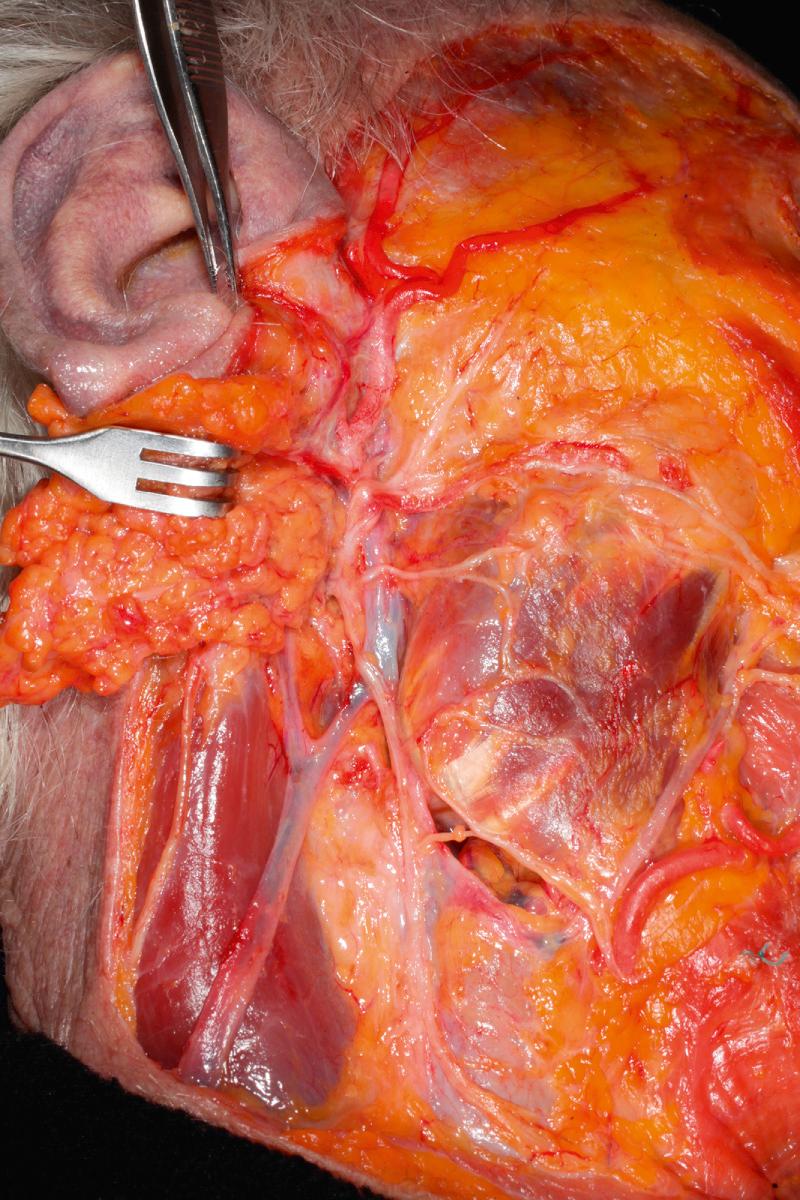
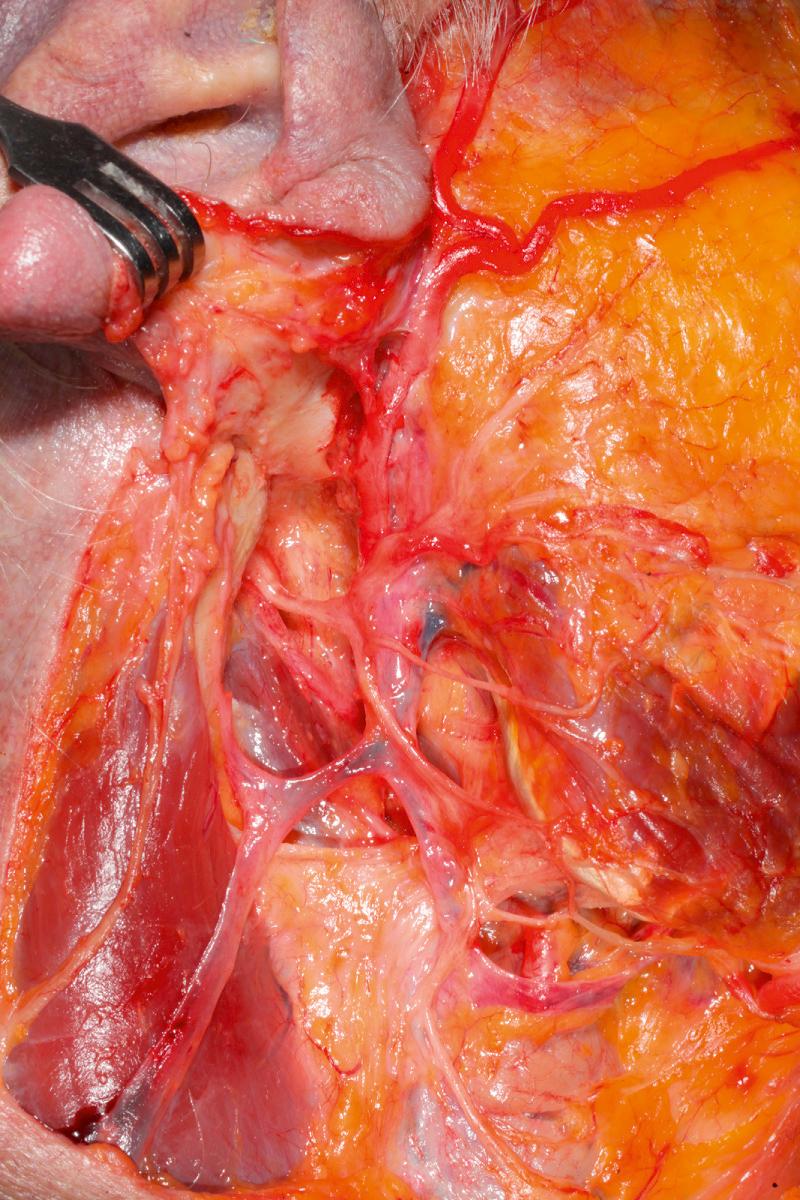
Venous drainage is achieved via the retromandibular vein. It is formed by unification of the superficial temporal and maxillary veins ( Figs. 1.7 , 1.8 ).
The parotid gland receives sensory and autonomic innervation. The autonomic innervation controls the rate of saliva production. Sensory innervation is supplied by the auriculotemporal nerve (gland) and the great auricular nerve. The parasympathetic innervation to the parotid gland has a complex path. It begins with the glossopharyngeal nerve (cranial nerve IX). This nerve synapses with the otic ganglion (a collection of neuronal cell bodies). The auriculotemporal nerve then carries parasympathetic fibers from the otic ganglion to the parotid gland. Parasympathetic stimulation causes an increase in saliva production.
Sympathetic innervation originates from the superior cervical ganglion, part of the paravertebral chain. Fibers from this ganglion travel along the external carotid artery to reach the parotid gland. Increased activity of the sympathetic nervous system inhibits saliva secretion, via vasoconstriction.
Become a Clinical Tree membership for Full access and enjoy Unlimited articles
If you are a member. Log in here